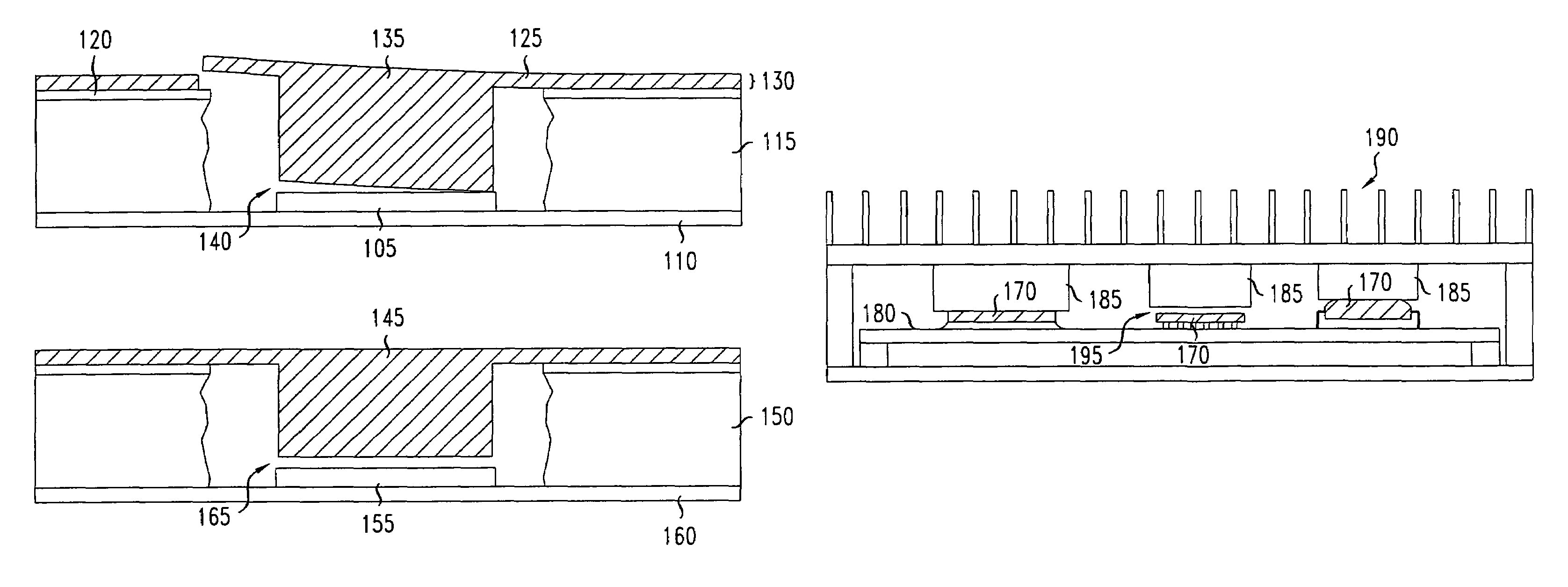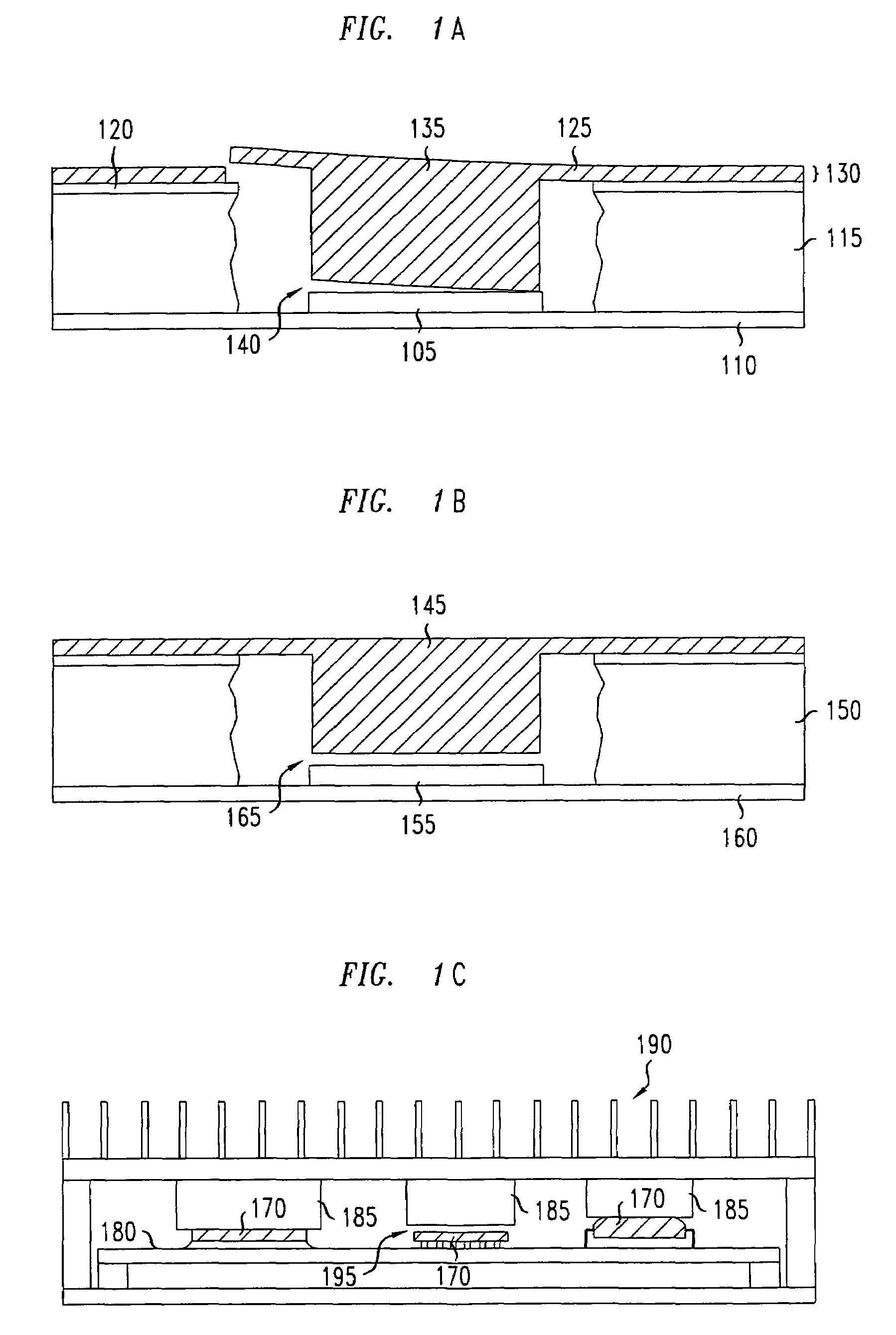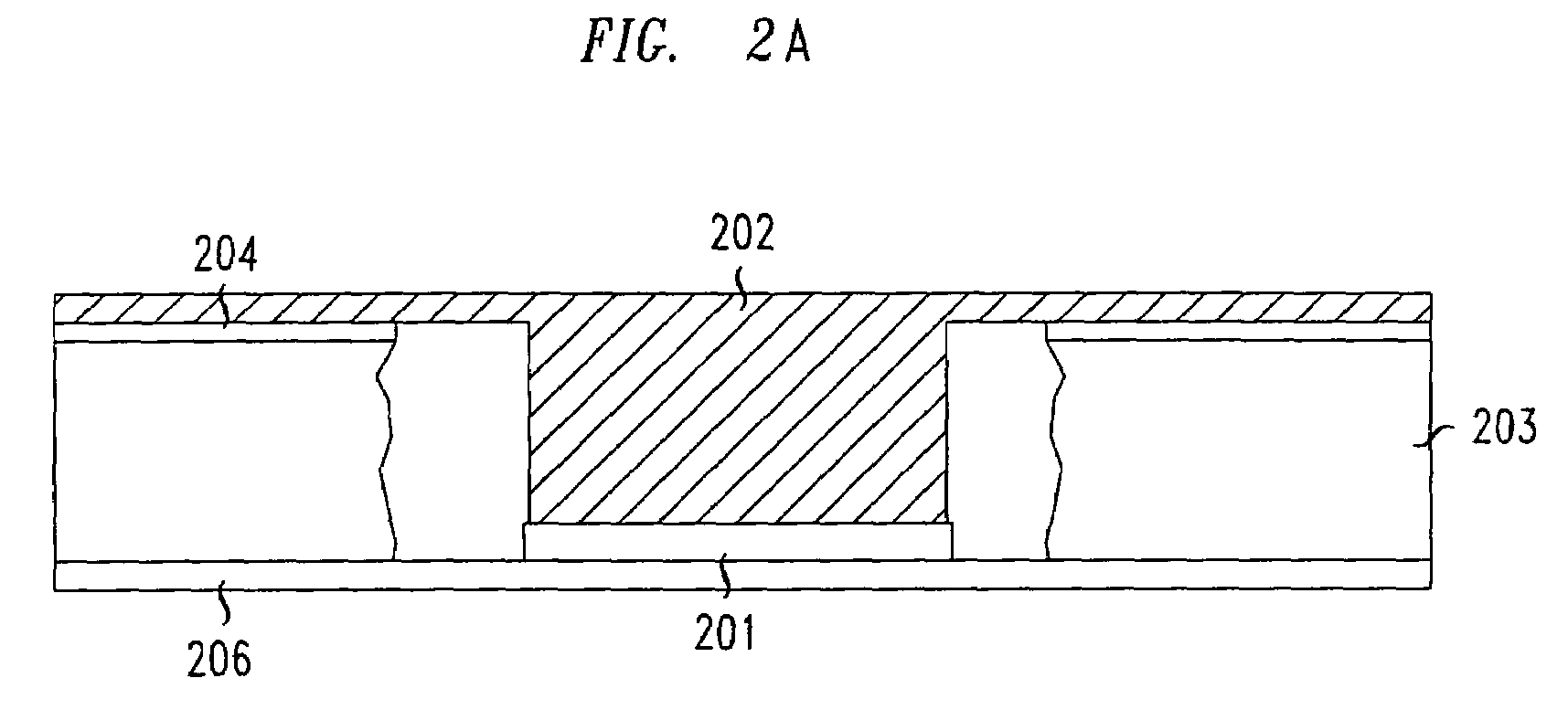Thermal management for shielded circuit packs
a shielded circuit and thermal management technology, applied in the direction of electrical apparatus contruction details, semiconductor/solid-state device details, lighting and heating apparatus, etc., can solve the problems of insufficient conduction through the pcb to keep junction temperature below the maximum operating limit, difficult to achieve cooling using this general technique, and variations in ic stack-up height and parallelism to the pcb. , to achieve the effect of improving thermal management, efficient cooling and low thermal resistan
- Summary
- Abstract
- Description
- Claims
- Application Information
AI Technical Summary
Benefits of technology
Problems solved by technology
Method used
Image
Examples
Embodiment Construction
[0015]Prior to describing the various aspects and embodiments of the present invention, and to further appreciate the heat dissipation solution enabled thereby, FIGS. 1A, 1B and 1C show known heat transfer assemblies which present certain thermal management challenges, as discussed above. More particularly, the heat transfer assembly of FIG. 1A centers on the notion of dimensioning the EMI shield box such that the IC component is always “too tall”, and to use a spring-like structure to make a mechanically compliant connection between the IC component package and the lid of the EMI shield box. As will be appreciated while FIG. 1A (and FIG. 1B and FIG. 1C) is shown, illustratively, with ICs, it will be understood that there are any number of alternative heat sources which can be substituted therefore. More particularly, as shown in the cross-sectional view of FIG. 1A, IC 105 is mounted to PCB 110 which is, in turn, enclosed within EMI shield box 115 having lid 120 (fabricated, illustr...
PUM
 Login to View More
Login to View More Abstract
Description
Claims
Application Information
 Login to View More
Login to View More - R&D
- Intellectual Property
- Life Sciences
- Materials
- Tech Scout
- Unparalleled Data Quality
- Higher Quality Content
- 60% Fewer Hallucinations
Browse by: Latest US Patents, China's latest patents, Technical Efficacy Thesaurus, Application Domain, Technology Topic, Popular Technical Reports.
© 2025 PatSnap. All rights reserved.Legal|Privacy policy|Modern Slavery Act Transparency Statement|Sitemap|About US| Contact US: help@patsnap.com



